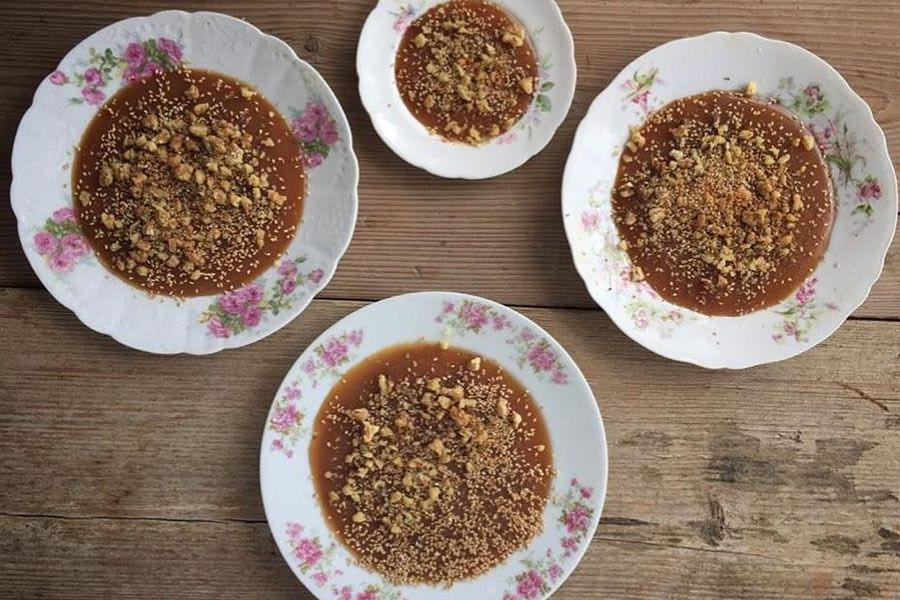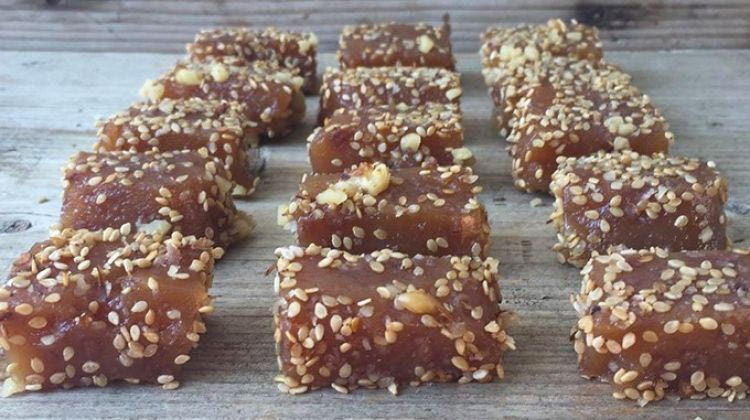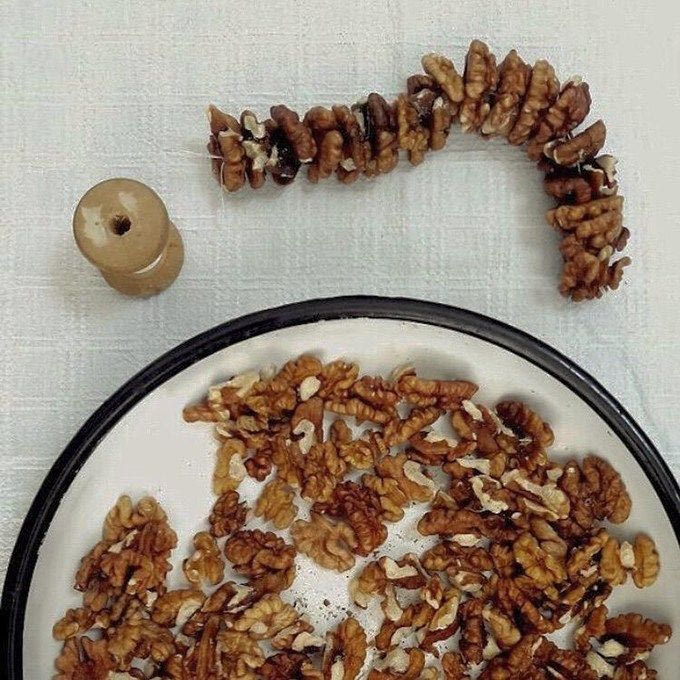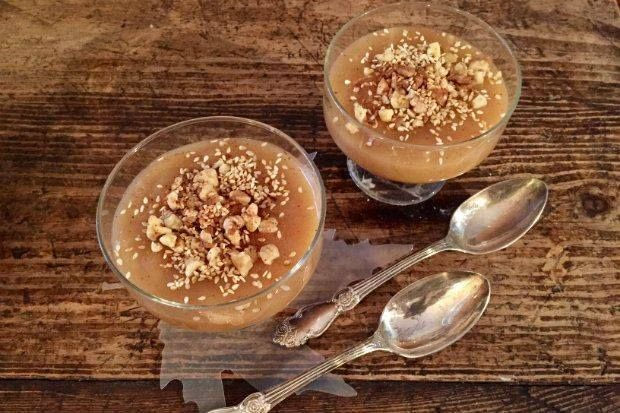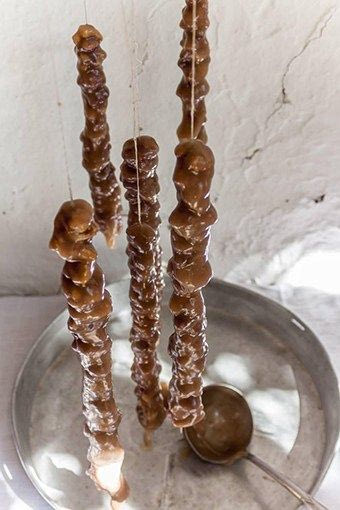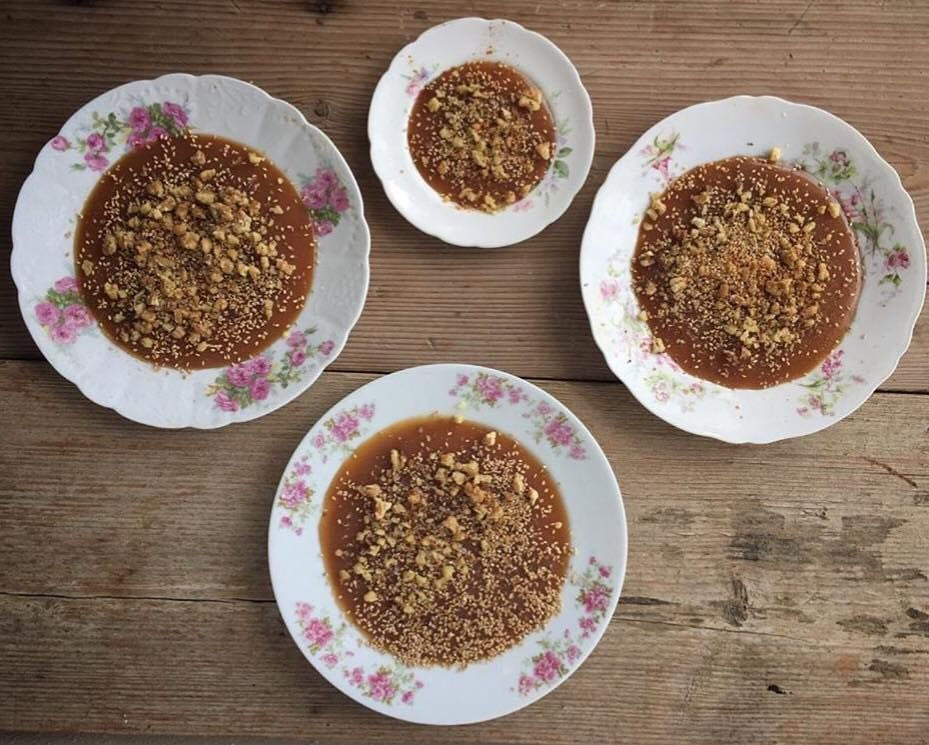One of the oldest sweet treats that homemakers in Crete used to make and offer was soutzoukia. Essentially, this is the well-known moustalevria (grape must pudding) with walnuts. From this same base, kiofteria were also made—dried grape must treats that were consumed during the winter months. So, with one pot, three traditional sweets were made: fresh moustalevria, dried moustalevria (kiofteria), and soutzoukia.
The key ingredient for these sweets is grape must, and the secret to success is the soil! According to traditional recipes, if you don’t “cut” the must with white clay, the sweets won’t turn out as they should.
The Cretan Cuisine Festival mentions the following about the history of these sweets:
“Making soutzoukia used to be a celebration in the villages and neighborhoods of Crete. Young and old would gather to stomp on the grapes, while the women would clean the must and prepare petimezi (grape molasses) or moustalevria. Moustalevria could be eaten fresh or dried into small pieces (kiofteria) or made into soutzoukia, which were then hung in airy, sunny places to dry thoroughly before being stored for use throughout the year.”
Soutzoukia provided a sweet treat that could be served to guests and enjoyed by family members all year round. Today, we know that these sweets are not only delicious but also nutritious, packed with electrolytes, vitamins, and antioxidants.
Traditional Recipes for Moustalevria and Soutzoukia
Soutzoukia Recipe
Ingredients:
Grape must
Flour
A bundle of amberoriza (wild rue)
Cinnamon
Moustalevria Preparation
Measure the grape must and add one part flour for every five parts must into a large pot. Add a little amberoriza and boil, stirring constantly with a wooden spoon until it thickens. To check if it’s ready, place a spoonful of the mixture on a wet plate. If it peels off easily once cooled, it’s done.
Soutzoukia Preparation
Thread walnut halves onto a string about 25–35 cm long. Holding one end of the string, dip the walnuts into the boiling moustalevria and lift them out to dry. Let them drain for a short time. Repeat this process 2–3 times until the walnuts are fully covered in a thick layer of moustalevria. Optionally, you can sprinkle the finished soutzoukia with sesame seeds, cinnamon, or extra walnuts. Let them dry in a well-ventilated area for a few days before storing them in a box.
Preparing the Must
Cleaning the Must:
Choose ripe grapes, wash, and drain them.
Remove the grapes from the stems and crush them in a clean cloth bag.
Strain the juice through a fine sieve to remove the pulp.
Sift 2-3 tablespoons of white clay (depending on the amount of must) and add it to the must.
Boil the must and skim off the foam until the must is clean, adding a bundle of amberoriza.
Let the must cool for a few hours, allowing any residue to settle. Strain again and repeat if necessary.
The recipe comes from the Cultural Association of Keramoutsio, with photos provided by Lena Igoumenaki, president of the Cretan Cuisine Festival.


